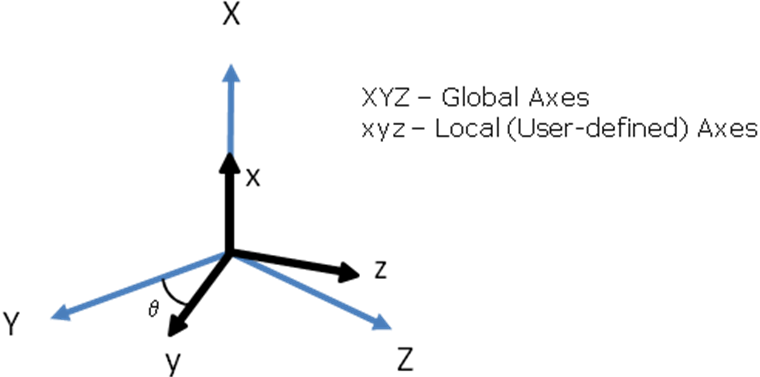In addition to the global and other pre-defined axes in Flexcom, the program does provide the option for you to define an arbitrary or ‘local’ system of axes. For example, rotational hydrodynamic coefficients for a point buoy may be defined with respect to a local axis system. The local axes are defined by inputting, as components in the global axes, two of the three vectors defining the axes, namely the local x-axis and y-axis. These must be orthogonal, and provided they are, Flexcom works out the component of the local z-axis using the right-hand rule. For example, in the simplified specification below where the local axes simply represent a rotation of the global axes about global X, appropriate inputs for the local x-axis would be (1, 0, 0) while the local y-axis could be defined as (0, cos θ, sin θ).

User-Defined or Local Axes